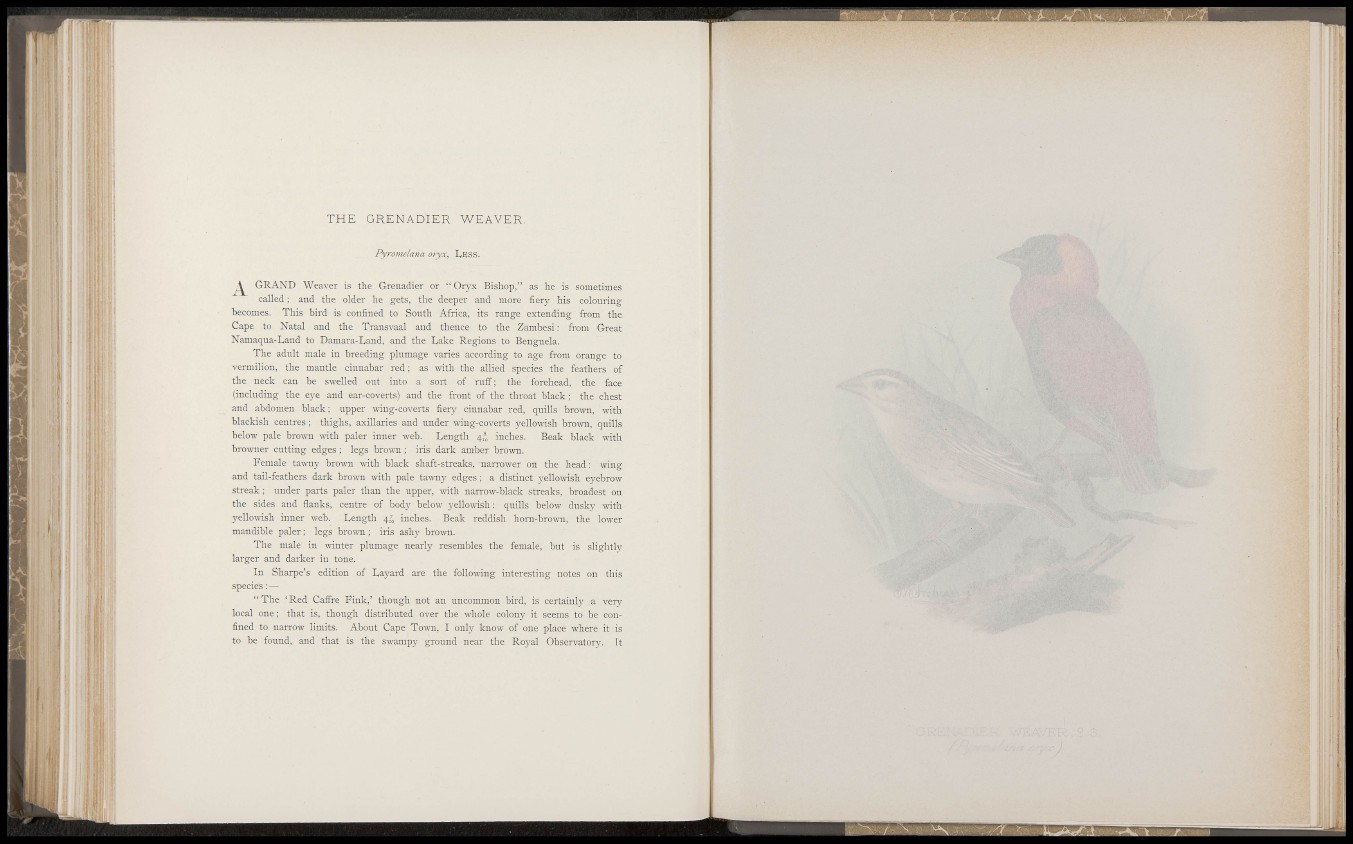
IjilJi
THE GRENADIER WEAVER.
Pyronielana oryx, lyESS.
^ GRAND Weaver is the Grenadier or " Oryx Bishop," as he is sometimes
called ; and the older he gets, the deeper and more fiery his colouring
becomes. This bird is confined to South Africa, its range extending from the
Cape to Natal and the Transvaal and thence to the Zambesi: from Great
Namaqua-Land to Damara-Land, and the Lake Regions to Bengnela.
The adult male in breeding phimage varies according to age from orange to
vermilion, the mantle cinnabar red ; as with the allied species the feathers of
the neck can be swelled out into a sort of ruff; the forehead, the face
(including the eye and ear-coverts) and the front of the throat black ; the chest
and abdomen black; upper wing-coverts fiery cinnabar red, quills brown, with
blackish centres ; thighs, axillaries and under wing-coverts yellowish brown, quills
below pale brown wdth paler inner web. Length 4,' inches. Beak black with
browner cutting edges ; legs brown ; iris dark amber brown.
Female tawny brown with black shaft-streaks, narrower on the head: wing
and tail-feathers dark brown with pale tawny edges ; a distinct 3'ellowish eyebrow
streak ; under parts paler than the upper, with narrow-black streaks, broadest on
the sides and flanks, centre of body below yellowish: quills below dusky with
yello\rish inner web. Length inches. Beak reddish hom-brown, the lower
mandible paler; legs brown ; iris ashy brown.
The male in winter plumage nearly resembles the female, but is slightly
larger and darker in tone.
In Sharpe's edition of Layard are the following interesting notes on this
species: —
" T h e 'Red Caffre Fink,' though not an uncommon bird, is certainly a verj'
local one ; that is, though distributed over the whole colony it seems to be confined
to narrow limits. About Cape Town, I only know of one place where it is
to be found, and that is the swampy ground near the Royal Observatory, ft
V I'Mi
i:; i I
: J
1 i 1»
I
1,1 !.«•
'- ' ;! •t ; i ': I'
" M l '
i il , f
^ I'
il '
i '•II
I 1 il'
I 1